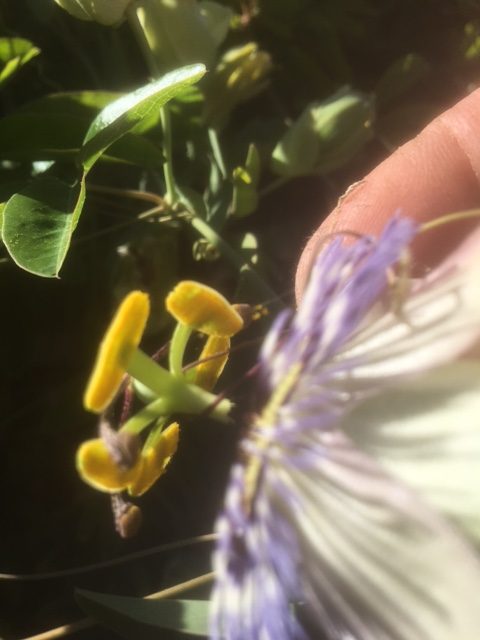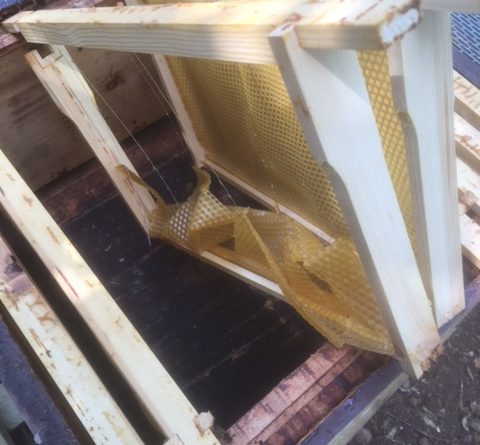The Apiary in August
Photo: Frames Collapse and Wax Melts in the Heat
As expected August is going to be a hot dry month with little nectar about as flowers from plants and trees all dry up in the heat and fade away.
If your hives have no shade from the direct sunlight especially in the full heat of the day, a flat sheet of cardboard weighed down on those metal roofs will assist the bees in regulating the temperature in the hives.
If not already done, time to remove any summer honey you have, get it extracted and return supers to the hives, above a crown board, so the bees can clean them up and take any residue down into the brood chamber for winter use.
I’m having to feed sugar syrup or Ambrosia to a number of my Nucs as they have insufficient bees to gather what Nectar there was when it was available. When taking honey off please ensure the colony has sufficient stores to survive the next few weeks or until the weather breaks and some flowers return.
The heat appears to have deterred the Wasps a little but they will be back once it all cools down, so reduce entrances and set your traps a few feet from the hives to prevent attracting the little ‘Devils’ to your colonies.
All this heat and lack of nectar will deter the Queens from laying or even mating for those late Queens needed for one reason or another, possibly bad mating flights in the spring.

Anyway if you find more than ten Varroa mites a day dropping onto your Varroa slides underneath the metal screen of your floors, it will be a good time to treat with one of the authorised products. The reason we do this at this time of year is that there will be little brood about for the Varroa to hide and breed in and they will all be riding around on the back of our bees vulnerable to treatment meaning “destruction”!
But only treat if needed. Those hives that have had a natural break in brood raising, maybe by swarming, may not need treatment as the Varroa had nowhere to breed and this heat may also have had a detrimental affect.
Always done with no honey supers on the hives and you are required to keep a record of any treatments used. The BBKA or BeeBase have a good pro-forma on their web site which I find useful.
There are many products on the market which you can use when feeding but I like Apiguard as it suits my style of Beekeeping and the foil trays sit easily on top of the Queen excluder next to a lump of Fondant.
Always follow those manufacturers instructions and recommendations.
We also need to plan for the Autumn/Winter ahead and ensure we have strong colonies ready to survive their big lockdown.
A good few of the Membership have purchased Fondant from West’s Bakery in Wellesbourne and instructions on how to feed this to the bees can be found on our Web site: Feeding Fondant – Stratford and District Beekeepers Association (stratfordbeekeepers.org.uk)
But the “long and short” of it is to leave the Queen Excluder on above the Brood Frames and bees and put a cut piece , wet side down, on the Queen excluder. The bees do the rest. I use a empty super as an eke to accommodate the big lump of Fondant.
I’m always asked how much to feed and this year if you have taken honey off a strong colony, they will need an entire block of Fondant to get them through the winter. The colony will need 30lbs of stores to survive the 6 months of the winter, so heft the back of the hives and see what they have on once you have taken supers off some of mine were surprisingly light.
The Association Apiary meetings will show you how we do this prior to our feeding plan as the month ends and we get into September.
As there always is, but watch out for Drone Layers and if you have no viable laying Queens by the end of the month, it is time to Unite to ensure you have a strong hive to get through the winter.
I will discuss this further in September …..







